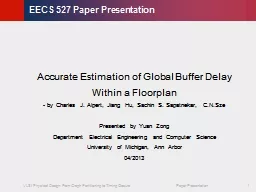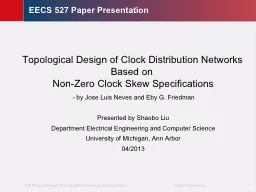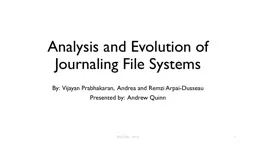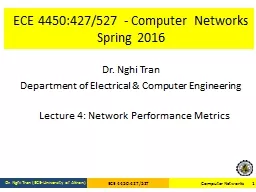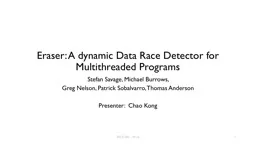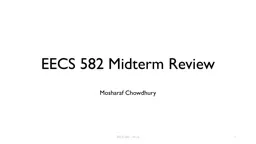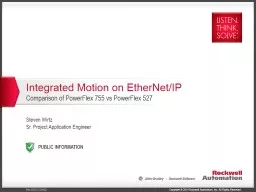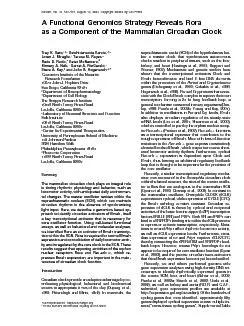PPT-1 EECS 527 Paper Presentation
Author : trish-goza | Published Date : 2015-10-28
Accurate Estimation of Global Buffer Delay Within a Floorplan by Charles J Alpert Jiang Hu Sachin S Sapatnekar CNSze Presented by Yuan Zong Department Electrical
Presentation Embed Code
Download Presentation
Download Presentation The PPT/PDF document "1 EECS 527 Paper Presentation" is the property of its rightful owner. Permission is granted to download and print the materials on this website for personal, non-commercial use only, and to display it on your personal computer provided you do not modify the materials and that you retain all copyright notices contained in the materials. By downloading content from our website, you accept the terms of this agreement.
1 EECS 527 Paper Presentation: Transcript
Download Rules Of Document
"1 EECS 527 Paper Presentation"The content belongs to its owner. You may download and print it for personal use, without modification, and keep all copyright notices. By downloading, you agree to these terms.
Related Documents

